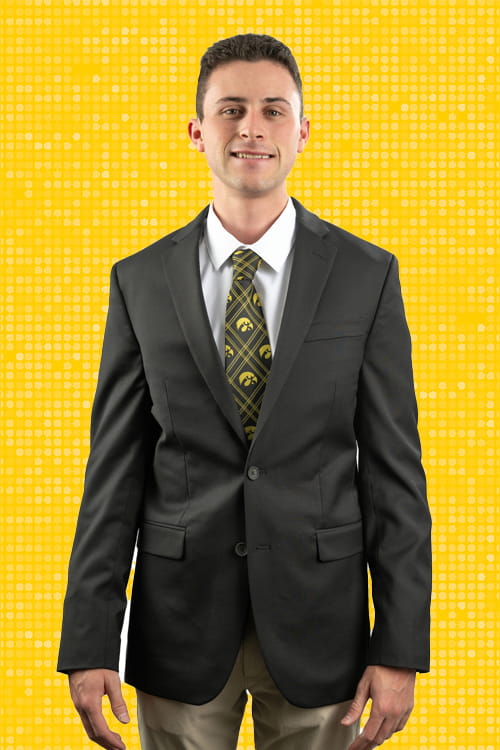
Charles Wilmot II, Undergraduate student, computer science and engineering
Optimizes treatment with machine learning
“Charles has shown a keen interest in augmenting his engineering coursework with hands-on research opportunities at the University of Iowa.” -Andrew Kusiak, professor
Hometown: Hermosa Beach, California
Faculty mentor/advisor: Andrew Kusiak, PhD, professor, industrial and systems engineering, College of Engineering
What is your degree program and anticipated graduation date? Bachelor’s in computer science and engineering
Please describe your research: In the research I dove into the medical world, focusing on a specific condition known as spontaneous sternoclavicular joint infection disease. Imagine sifting through a giant puzzle of seemingly unrelated data to discover patterns or clues that might reveal the most effective ways to help people with this condition. By utilizing machine learning, which allows computers to learn and make decisions from data, and a programming language called Python, we worked to unravel this puzzle. Through analyzing a vast amount of data related to the disease, our goal was to pinpoint the optimal strategies to assist patients, potentially paving the way for improved treatment approaches in the future.
In simple terms, why does this research matter? This research matters because spontaneous sternoclavicular joint infection disease, although a bit of a mouthful, is a condition that can significantly impact the lives of those who suffer from it. In a wider context, exploring vast data and discovering patterns or associations through machine learning can enhance our understanding of how the disease works and how to best treat it. Our project aimed not just to decipher more about this particular disease but to create a blueprint for using similar methods to understand other diseases and other treatments in the future, along with finding the best solution and methods to help these patients. In essence, by utilizing technology and data, we’re looking to pave new pathways that might enable better, more targeted, and effective treatments for various health conditions, contributing to improving healthcare for all.
How soon after starting at the University of Iowa were you able to participate in research? I began exploring the possibility of undergraduate research in my junior year at the University of Iowa. After a couple months of actively reaching out, through various emails and phone calls, I had the pleasure of connecting with Dr. Andrew Kusiak, which opened the door to my involvement in research.
How has being involved in research made you more successful at the University of Iowa? My involvement in research has notably amplified my success at the University of Iowa. Engaging in research not only enabled me to practically apply my engineering skills in a tangible, real-world context but also significantly bolstered my confidence in my own capabilities. Reflecting back, I wish that I had plunged into the world of undergraduate research sooner, recognizing now the profound impact it has had on both my academic and personal development.
What are your career goals and/or plans after graduation? After completing my engineering studies, my career aspirations are twofold. Firstly, I intend to pursue graduate school, diving deeper into engineering disciplines and potentially specializing in an area that particularly captivates not only my interest and passion but ties into my career. After that, I am drawn to applying my skills and knowledge in a dynamic environment, specifically, I aim to embark on a career in engineering at the Space Force, located at Los Angeles Air Force Base. This trajectory allows me to merge my academic background with my enthusiasm for space and defense technologies, contributing to advancements in a vital field for our nation and future explorations.
Banner location: Downtown—
